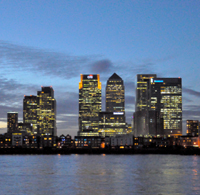Enhancing Resilience of London by Learning from Experiences
Abstract
The concept of resilience was introduced at the beginning of the 70s to indicate the capability of natural systems to absorb perturbations, preserving their structure and keeping the system functioning. The paper considers London as an example to a resilient city by focusing on some remarkable disasters in the history of London, such as the Great Fire of 1666, the air raids during the World War 2, 18 December 1987 Kings Cross Fire, terrorist attack to tube network on the 7th of July 2005, 1928 flooding and 1953 storm surge. The paper starts by giving short descriptions of these disasters and continues by discussing the lessons learned. In this paper, the concept of resilience has been studied in three phases: prepare for, respond to and recover from a disaster. Besides, actions that have to be taken according to these three phases are going to be explored in detail. In conclusion, the notable effects of the mentioned disasters on the structural and non-structural tools for disaster prevention have been revealed by considering resilience of London.
Downloads
References
Blakie P., Cannon T., Davis I., Wisner, B. (1994) At risk: Natural Hazards, People’s vulnerability and Disasters, Routledge, London.
Green C. H., Penning Rowsell E. C. (1989) “Flooding and the quantification of ‘intangibles’”, Journal of the Institution of Water and Environmental Management 3(1), pp.27-30.
Forshaw J. H., Abercrombie P. (1943) County of London Plan, Macmillan and Co. Ltd., London.
Hall P. (1989) London 2001, Unwin Hayman, London.
Hall P. (1993) Cities of Tomorrow, Blackwell, London.
Holford I. (1976) British Weather Disasters, David and Charles Inc., Vermont, USA.
Jonkman S. N, Kelman I. (2005) “Deaths During the 1953 North Sea Storm Surge”, pp. 749- 758 in Proceedings of the Solutions to Coastal Disasters Conference, American Society for Civil Engineers (ASCE), Charleston, South Carolina, 8-11 May 2005.
Walker G., Deeming H., Margottini C., Menoni S. (2011) “Introduction to sustainable risk mitigation for a more resilient Europe”, in Menoni, S. and Margottini, C. (eds.) Inside Risk: A strategy for sustainable risk mitigation, Springer, Milan.
Parker D. J. (1999) “Disaster response in London: A case of learning constrained by history and experience”, in James K. Mitchell (ed.) Crucibles of Hazard: Mega-Cities and Disasters in Transition, United Nations University Press, New York.
Parker D. J. (1995) “Floodplain development policy in England and Whales” Applied Geography vol: 15, no.4 pp. 341-363
Parker D. J., Green C. H., Thompson P. M. (1987) Urban Foods Protection Benefits: a Project Appraisal Guide, Aldershot, Gower.
Withington J. (2010) London’s Disasters. From Baudicca to the banking crisis, The history Press, Gloucestershire.
Website References:
Met Office: Great weather events: the UK east coast floods of 1953, online at:
http://www.metlink.org/pdf/teachers/1953_east_coast_floods.pdf
RIBA Library Drawings and Archives Collections (30.04.2012) online at:
Stephen Inwood, A History of London (30.04.2012) online at:

Copyright (c) 2014 Tema. Journal of Land Use, Mobility and Environment

This work is licensed under a Creative Commons Attribution 4.0 International License.
Authors who publish in this journal agree to the following:
1. Authors retain the rights to their work and give in to the journal the right of first publication of the work simultaneously licensed under a Creative Commons License - Attribution that allows others to share the work indicating the authorship and the initial publication in this journal.
2. Authors can adhere to other agreements of non-exclusive license for the distribution of the published version of the work (ex. To deposit it in an institutional repository or to publish it in a monography), provided to indicate that the document was first published in this journal.
3. Authors can distribute their work online (ex. In institutional repositories or in their website) prior to and during the submission process, as it can lead to productive exchanges and it can increase the quotations of the published work (See The Effect of Open Access)
